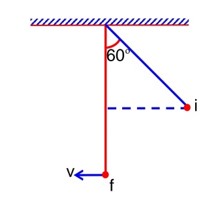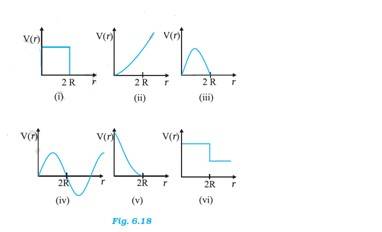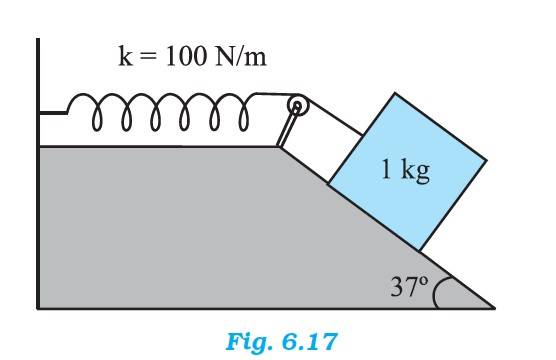Work, Energy and Power
Get insights from 177 questions on Work, Energy and Power, answered by students, alumni, and experts. You may also ask and answer any question you like about Work, Energy and Power
Follow Ask QuestionQuestions
Discussions
Active Users
Followers
New answer posted
4 months agoContributor-Level 10
m = 200 g, ki = 90 J kf = 40 J.,
So for complete rest :-
Fx = 90 J
2x = 90 x = 45 m
New answer posted
4 months agoNew answer posted
6 months agoContributor-Level 10
6.30 The decay process of free neutron at rest is given as:
n
From Einstein's mass-energy relation, we have the energy of electron as? where,
? m = Mass defect = Mass of neutron – ( Mass of proton + mass of electron)
c = speed of light
? m and c are constant. Hence, the given two-body decay is unable to explain the continuous energy distribution in the -decay of a neutron or a nucleus. The presence of neutrino von the LHS of the decay correctly explain the continuous energy distribution.
New answer posted
6 months agoContributor-Level 10
6.29 The potential energy of two masses in a system is inversely proportional to the distance between them. The potential energy of the system of two balls will decrease as they get closer to each other. When the balls touch each other, the potential energy becomes zero, I.e. at r = 2R. The potential energy curve in (i), (ii), (iii), (iv) and (vi) do not satisfy these conditions. So there is no elastic collision.
New answer posted
6 months agoContributor-Level 10
6.28 Mass, m = 200 kg
Speed, v = 36 km/h = 10 m/s
Mass of the boy, M = 20 kg
Initial momentum = (M + m)v = (20 + 200) x 10 kg-m/s = 2200 kg-m/s
If v' is the final velocity of the trolley, then
The final momentum = (M+m) x v' – M x 4= 220v'-80
According to the law of conservation of energy,
Initial momentum = final momentum
2200 = 220v'-80
V' = 10.36 m/s
Time required by the boy to travel 10m = 10/4 = 2.5 s
Distance travel by trolley in 2.5 s = 10.36 x 2.5 m = 25.9 m
New answer posted
6 months agoContributor-Level 10
6.27 Mass of the bolt, m = 0.3 kg, Height of the elevator, h = 3 m
Since the bolt did not rebound, the entire potential energy got converted into heat.
The potential energy of the bolt = mgh = 0.3 x 9.8 x 3 J = 8.82 J
The heat produced will remain same even if the lift is stationary, since g = constant
New answer posted
6 months agoContributor-Level 10
6.26 Mass of the block = 1 kg
Spring constant = 100 N/m
Displacement of the block, x = 10 cm = 0.1 m
At equilibrium, normal reaction, R =
Frictional force, F = =
Net force acting on the block down on the incline = - F
= -
=mg ( )
At equilibrium,
Work done = Potential energy of the stretched string
mg ( ) = (1/2)kx2
1 x 10 x ( ) = (1/2) x 100 x 0.1
10 x (0.602 – = 0.5 x 100 x 0.1
Taking an Exam? Selecting a College?
Get authentic answers from experts, students and alumni that you won't find anywhere else
Sign Up on ShikshaOn Shiksha, get access to
- 65k Colleges
- 1.2k Exams
- 679k Reviews
- 1800k Answers






